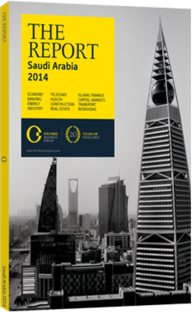SABIC: Industry
THE COMPANY: Saudi Basic Industries Corporation (SABIC) is Saudi Arabia’s largest publicly listed non-oil company. It was established in 1976 by royal decree to utilise the vast reserves of hydrocarbons in the country, especially natural gas, which until then had simply been flared off. SABIC is 70% government owned and the rest is free float. SABIC’s structure is that of a holding company for various established companies in the form of subsidiaries and joint ventures, mainly petrochemical companies in Saudi Arabia.
SABIC operates through three main business divisions: petrochemicals, fertilisers and metals. Together, petrochemicals and fertilisers account for more than 90% of total revenues. These two segments benefit considerably from the low cost of natural gas in Saudi Arabia, estimated at $0.75 per million British thermal units (mmbtu), sourced from state-owned Saudi Aramco.
PETROCHEMICALS: Petrochemicals is the largest division of the company and in 2013 accounted for more than 80% of the total revenue and over 75% of gross profits. Over the years, SABIC has leveraged the vast availability of cheap natural gas in Saudi Arabia to become one of the largest and cheapest global producers of commodity chemicals. SABIC is the largest ethylene producer, accounting for about 8.5% global supply. Although SABIC has traditionally focused on commodity chemicals, where it enjoys a major cost advantage, in the last few years the company has made a number of acquisitions such as DSM Petrochemicals for $2bn in 2002, Huntsman Petrochemicals (UK) for $700m in 2006, and GE Plastics for $11.6bn in 2007, exposing itself to higher-end chemicals.
FERTILISERS: The fertiliser division of SABIC is focused on the production of nitrogen-based fertilisers, urea and ammonia. Similar to petrochemicals, this division also enjoys the feedstock cost advantages through its natural gas feed production facilities. Some 75-80% of the production costs for nitrogen is accounted for by natural gas, and considering the availability of cheap natural gas in Saudi Arabia, it offers a significant cost advantage. We estimate the Saudi-based nitrogen fertiliser producers’ cost base at $80-85 per tonne against marginal urea producers’ costs of $250-270 per tonne.
Some 70% of SABIC’s fertiliser capacity comes via Saudi Arabian Fertiliser Company, better known as SAFCO, of which SABIC controls 43%, although it fully consolidates. While fertilisers account for 3% of total revenues, given the very low cost base, they enjoy the highest gross profit margins among all of SABIC’s divisions and account for 8% of the gross profits.
METALS: SABIC is also a significant producer of steel. In 2013, the division accounted for 8% of the company’s total revenue and gross profits. Unlike petrochemicals and fertilisers, the steel division does not benefit from any explicit feedstock cost advantages, but, given the fact that it is a high-energy intensive business, it does benefit from the low utilities costs in Saudi Arabia. With a production capacity of over 5m tonnes, SABIC is the largest steel producer in the Middle East. Sales increased by 3% in 2013 to reach SR194m ($51m), recouping the 0.5% year-on-year decline in 2012 revenues. In 2013, SABIC reported an EBITDA of SR56m ($14m) and net profit of SR25m ($6m).
DEVELOPMENT STRATEGY: The latest additions to SABIC’s impressive petrochemical portfolio are Yanbu National Petrochemical Company (YANSAB), Sinopec SABIC Tianjin Petrochemical Company, SHARQ Eastern Petrochemical Company and Saudi Kayan Petrochemical Company. SABIC has 51% ownership of YANSAB, whose relatively new petrochemical facility has now reached its full production capacity.
SABIC earnings are highly sensitive to gas price fluctuations; if the price of feedstock increases from $1.5 mmbtu to $2 mmbtu, the valuation declines by 5.3%. This situation is going to change as new facilities move to reduce their dependence on gas. We estimate SABIC’s external sales volume to be roughly 60m tonnes per year out of a total production capacity of 65m tonnes, with the difference largely consumed internally throughout the various basic chemical building block chains.
You have reached the limit of premium articles you can view for free.
Choose from the options below to purchase print or digital editions of our Reports. You can also purchase a website subscription giving you unlimited access to all of our Reports online for 12 months.
If you have already purchased this Report or have a website subscription, please login to continue.

